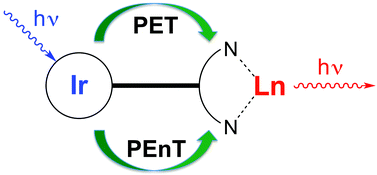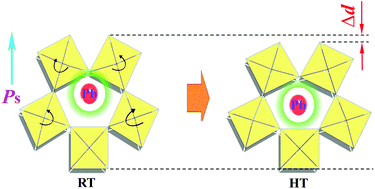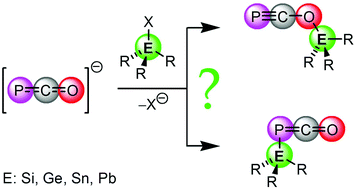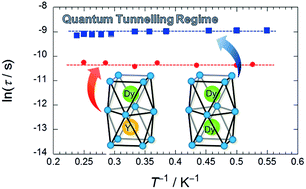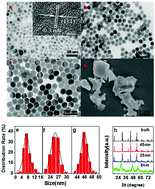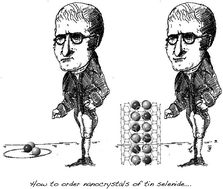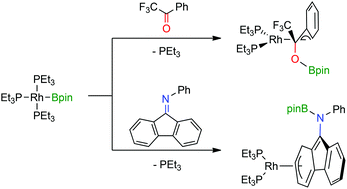Sensitisation of Eu(III)- and Tb(III)-based luminescence by Ir(III) units in Ir/lanthanide dyads: evidence for parallel energy-transfer and electron-transfer based mechanisms
Daniel Sykes, Ahmet J. Cankut, Noorshida Mohd Ali, Andrew Stephenson, Steven J. P. Spall, Simon C. Parker, Julia A. Weinstein and Michael D. Ward
Dalton Trans., 2014, Advance Article
DOI: 10.1039/C4DT00292J
Free to access until 16th April 2014
Structure and thermal expansion of the tungsten bronze Pb2KNb5O15
Kun Lin, Hui Wu, Fangfang Wang, Yangchun Rong, Jun Chen, Jinxia Deng, Ranbo Yu, Liang Fang, Qingzhen Huang and Xianran Xing
Dalton Trans., 2014, Advance Article
DOI: 10.1039/C3DT53340A
Free to access until 16th April 2014
Is the phosphaethynolate anion, (OCP)−, an ambident nucleophile? A spectroscopic and computational study
Dominikus Heift, Zoltán Benkő and Hansjörg Grützmacher
Dalton Trans., 2014, Advance Article
DOI: 10.1039/C3DT53569J
Free to access until 11th April 2014
Effect of f–f interactions on quantum tunnelling of the magnetization: mono- and dinuclear Dy(III) phthalocyaninato triple-decker single-molecule magnets with the same octacoordination environment
Keiichi Katoh, Rina Asano, Akira Miura, Yoji Horii, Takaumi Morita, Brian K. Breedlove and Masahiro Yamashita
Dalton Trans., 2014, Advance Article
DOI: 10.1039/C4DT00042K
Free to access until 11th April 2014
Zinc(II) and cadmium(II) metal–organic frameworks with 4-imidazole containing tripodal ligand: sorption and anion exchange properties
Shui-Sheng Chen, Peng Wang, Satoshi Takamizawa, Taka-aki Okamura, Min Chen and Wei-Yin Sun
Dalton Trans., 2014, Advance Article
DOI: 10.1039/C3DT53388C
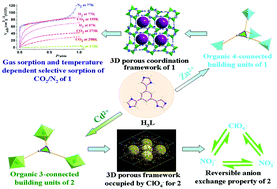
Free to access until 4th April 2014
Interactions of Pb and Te atoms with graphene
Chuncheng Gong, Alex W. Robertson, Kuang He, Camden Ford, Andrew A. R. Watt and Jamie H. Warner
Dalton Trans., 2014, Advance Article
DOI: 10.1039/C4DT00143E
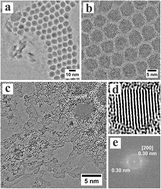
Free to access until 4th April 2014
Reactivity of [K3(phen)8][Cu(NPh2)2]3—a possible intermediate in the copper(I)-catalyzed N-arylation of N-phenylaniline
Chia-Kai Tseng, Chi-Rung Lee, Mei-Chun Tseng, Chien-Chung Han and Shin-Guang Shyu
Dalton Trans., 2014, Advance Article
DOI: 10.1039/C4DT00051J
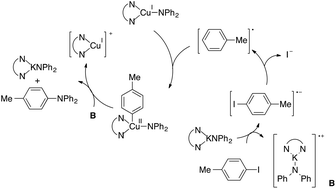
Free to access until 4th April 2014
Temperature-dependent upconversion luminescence and dynamics of NaYF4:Yb3+/Er3+ nanocrystals: influence of particle size and crystalline phase
Wei Yu, Wen Xu, Hongwei Song and Shuang Zhang
Dalton Trans., 2014, Advance Article
DOI: 10.1039/C3DT53562B
Free to access until 4th April 2014
Band gap expansion, shear inversion phase change behaviour and low-voltage induced crystal oscillation in low-dimensional tin selenide crystals
Robin Carter, Mikhail Suyetin, Samantha Lister, M. Adam Dyson, Harrison Trewhitt, Sanam Goel, Zheng Liu, Kazu Suenaga, Cristina Giusca, Reza J. Kashtiban, John L. Hutchison, John C. Dore, Gavin R. Bell, Elena Bichoutskaia and Jeremy Sloan
Dalton Trans., 2014, Advance Article
DOI: 10.1039/C4DT00185K
Free to access until 25th April
Versatile reactivity of a rhodium(I) boryl complex towards ketones and imines
Sabrina I. Kalläne, Thomas Braun, Beatrice Braun and Stefan Mebs
Dalton Trans., 2014, Advance Article
DOI: 10.1039/C4DT00080C
Free to access until 25th April


